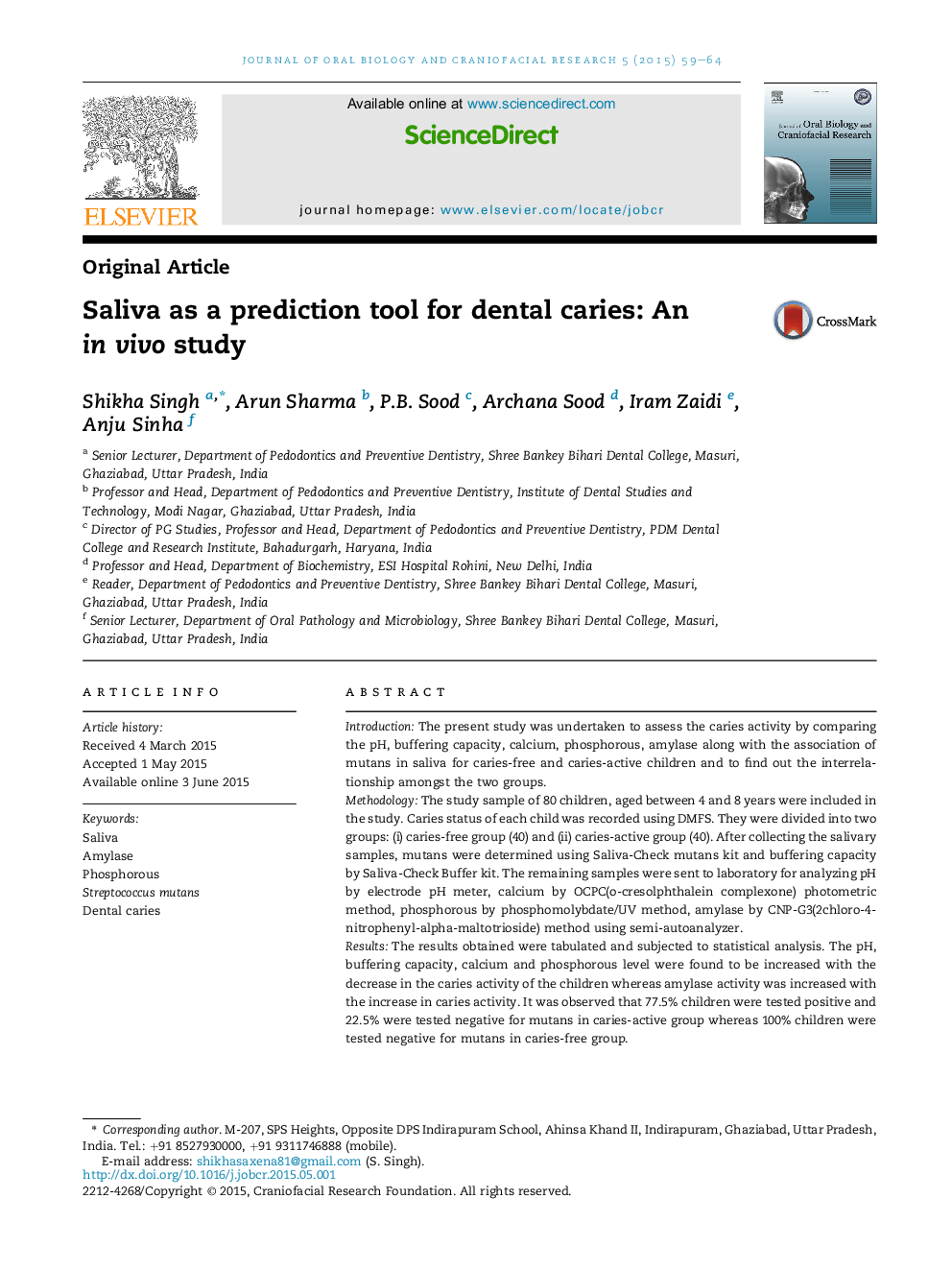| Article ID | Journal | Published Year | Pages | File Type |
|---|---|---|---|---|
| 3157443 | Journal of Oral Biology and Craniofacial Research | 2015 | 6 Pages |
IntroductionThe present study was undertaken to assess the caries activity by comparing the pH, buffering capacity, calcium, phosphorous, amylase along with the association of mutans in saliva for caries-free and caries-active children and to find out the interrelationship amongst the two groups.MethodologyThe study sample of 80 children, aged between 4 and 8 years were included in the study. Caries status of each child was recorded using DMFS. They were divided into two groups: (i) caries-free group (40) and (ii) caries-active group (40). After collecting the salivary samples, mutans were determined using Saliva-Check mutans kit and buffering capacity by Saliva-Check Buffer kit. The remaining samples were sent to laboratory for analyzing pH by electrode pH meter, calcium by OCPC(o-cresolphthalein complexone) photometric method, phosphorous by phosphomolybdate/UV method, amylase by CNP-G3(2chloro-4-nitrophenyl-alpha-maltotrioside) method using semi-autoanalyzer.ResultsThe results obtained were tabulated and subjected to statistical analysis. The pH, buffering capacity, calcium and phosphorous level were found to be increased with the decrease in the caries activity of the children whereas amylase activity was increased with the increase in caries activity. It was observed that 77.5% children were tested positive and 22.5% were tested negative for mutans in caries-active group whereas 100% children were tested negative for mutans in caries-free group.ConclusionThe physicochemical properties of saliva, such as pH, buffering capacity, calcium, phosphorous, amylase and Streptococcus mutans has a definite relationship with caries activity.
